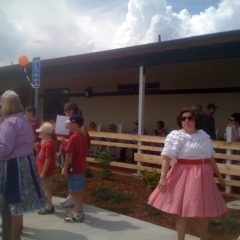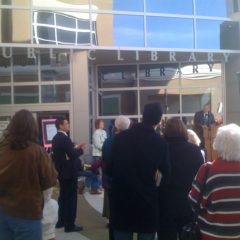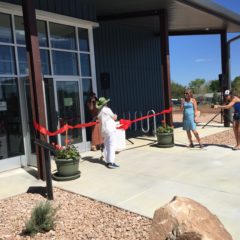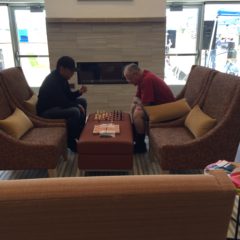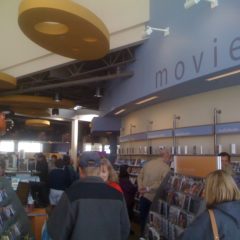Throughout January 2020, we will be taking a look back at the 10s and Teens in Colorado libraries. Our series continues with Libraries and Their Communities.
Libraries & Their Communities
- Libraries as Community Living Rooms – Libraries have always been centers of their schools, campuses and communities, yet the shifts in 2010 – 2019 make them even more so today. For example, recently the town of Norwood opening of their new public library and the whole community came out with pride, and plans, for it. Volunteers shared their ideas for events in the meeting room, men sat down to play chess, and folks mingled on the patio as the live band played. Throughout Colorado library activities include knitting clubs, yoga groups, and other ways for people to come together for shared interests. Recreational activities such as these have become common in Colorado libraries as well as out of them. Pine River Library District has an expansive community garden, Anythink and other libraries host summer outdoor concerts, and several libraries are creating outdoor play spaces for children. Perhaps as welcoming as these spaces are, the addition of “passive” programs for library visitors (unstaffed, interactive areas) have sparked fresh and lively ways for anyone to find unexpected and delightful ways to explore in their libraries. As circulation of physical materials has dipped in many libraries, the leadership and staff are expanding their recreational and social role to encourage connections, curiosity, and discovery in the shared community space.
-
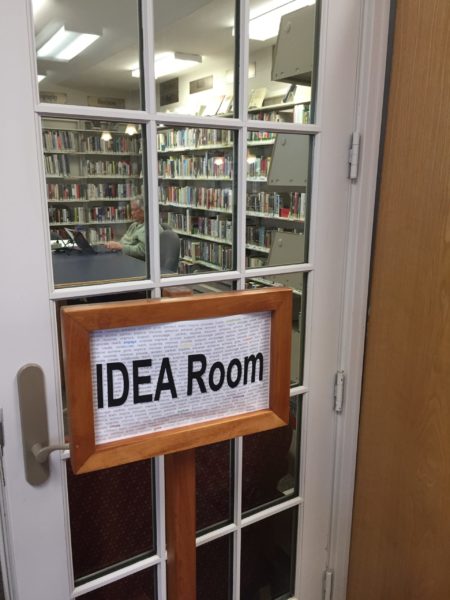
La Veta Public Library Idea Room for Community Conversation Community Engagement – Along with recreational activities, public libraries have been launching discussion groups using strategies developed for libraries by the Harwood Institute, the Aspen Institute, At the Table Colorado, and other organizations working in the civic engagement sphere. With the divisive and polarized nation, local libraries are seen as uniquely BLE to bring residents together for meaningful dialogue. This trend is increasing as libraries add dialogue facilitation skills to their staff job descriptions and assign community engagement responsibilities. To support and grow this trend, Colorado libraries have a Civic Engagement email list for those who facilitate community conversations and civic engagement in their communities. As library staff look to the 20s, the Aspen Institute and Harwood Institute are no longer funded in these areas, leaving libraries, and their associations, to sustain and develop this community role.
- Embedded Librarianship – In 2010, a few Colorado academic libraries had subject specialists embedded within the departments of their expertise. This trend has increased since 2010 as more academic instructional librarians and subject specialists working closely with faculty for the support of scholarship. Public libraries are also expanding their outreach with library staff joining community organizations, engaging in festivals, parades, and other community events. In addition, libraries are expanding partnerships with local organizations to realize broader community impact.
- Community Resilience – In 2018, when the Aspen Institute released the report, Libraries: Building Community Resilience in Colorado, the results were informed by stakeholders throughout the state. For example, Claudine Perrault, Director of the Estes Valley Library District described the flood in Estes Park and how the library’s building, services, and staff supported the community through the crisis and on the road to recovery. At the same time, check out of movies and other escape materials skyrocketed. Other major floods, fires, and disasters of the past decade prompted the local libraries to send staff to shelters with laptops for adults to apply for FEMA while children enjoyed storytimes and art activities offered by youth librarians. Libraries stepped up to be central support during crisis situations. Libraries also were vital to recovery and rebuilding efforts. With continued extreme and unpredictable climate events, the future of libraries will quite likely require the leadership and staff to proactively be prepared to support those in crisis as they seek information, resources, and, even, a bit of escape.
